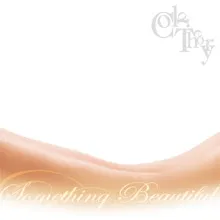
Color Theory
21st Century Piano Pop for fans of Tori Amos, Rufus Wainwright, Ben Folds
2
songs
426
plays

And You Thought I Was Joking And You Thought I Was Joking
Still I hold hope inside that someday my words will run free, to play out my part in something bigger than me.

Second Best Second Best
You ask him if he loves you and he tells you yes, but he's never going to settle for second best.
21st Century Piano Pop for fans of Tori Amos, Rufus Wainwright, Ben Folds
Brian Hazard is bored with pop music. He listens to talk radio in the car, and skips over the singles when he listens to CDs at home. To have any chance of success in the highly competitive realms of radio and live performance, today’s pop songs need to be mind-numbingly repetitive. If the listener doesn’t catch on by the second chorus, they change the station or leave the bar. It’s as simple as that.
Color Theory offers something less commercial intimate pop music with depth. The instrumentation of the new album falls somewhere between a rock band and a Broadway musical: piano, vocals, fretless bass, drums (courtesy of the legendary Jonathan Moffett), string quartet, vibraphone, flute, and harp.Band/artist history
The Southern California one-man band has been stirring emotions since the 1994 release of Sketches In Grey. Despite the lack of mainstream national distribution or a single live performance, the first pressing sold out. Demand was high for a new album, and Color Theory responded with the 1997 release of Tuesday Song, which includes a daringly non-fiction song used for a real-life marriage proposal. 1999 heralded the release of Perfect Tears, which was so intimate that it was promoted through a series of personal ads. The album was in regular rotation at over 40 European commercial radio stations. 2001’s Life’s Fairytale further explores Hazard’s electronic tendencies, and includes the song “Ponytail Girl”, mistakenly traded around the world as a Depeche Mode B-side. On the contrary, 2002’s Something Beautiful features only acoustic instruments. Twenty-six weekly demo recordings were posted on the web as part of the “Bad Song of the Week” project, which allowed fans to rank their favorites and help decide what songs would ultimately be included on the album.
With a fiercely loyal fanbase, persistence, and clear artistic vision, Color Theory is poised for long-term success. In a world of disposable art, Hazard creates music of substance to savor for years.Have you performed in front of an audience?Though Hazard still competes for airplay, he has sworn off performance, focusing on creation rather than re-creation. He believes that “if the recording presents the song in its truest form, then a live performance can only fall short of that.”
Your musical influences
David Sylvian, Rufus Wainwright, Blue Nile, Counting Crows, Everything But The Girl, Tori Amos, Depeche Mode, Ben Folds FiveAnything else?
A central Color Theory philosophy is that lyrics are 50% of the song.
Huntington Bch., CA
USA
ID
1092
Contact
Sorry, this artist currently doesn't accept email messages.